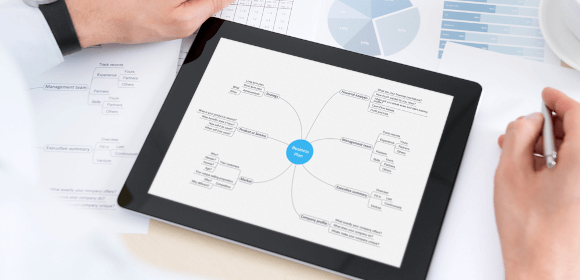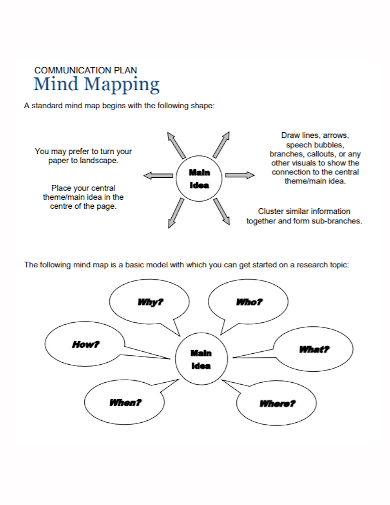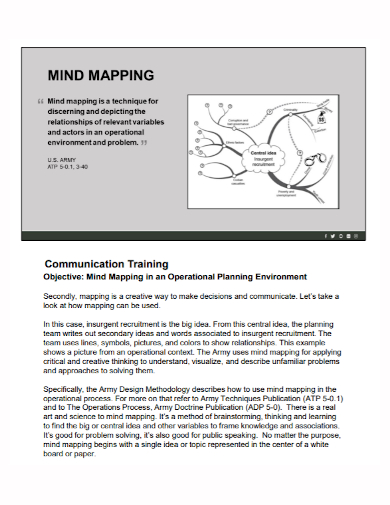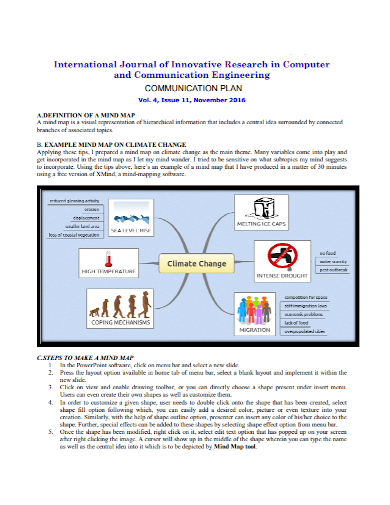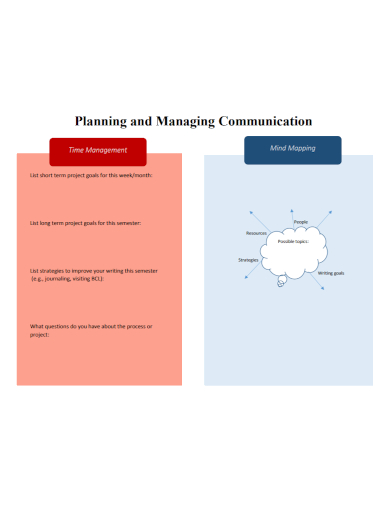If you’re assigned to be responsible for handling communication activities in your company or your organization, one of your main responsibilities is creating a communication plan to improve the communication activity within and outside your jurisdiction. Maintaining an efficient communication activity is important to ensure that you are connected constantly with your stakeholders and intended audience. If presenting a communication plan alone maybe become dull and burdensome for you or your team, you can jazz up your presentation by delivering the communication plan using a mind map. A mind map is a visually appealing diagram that organizes all your ideas and thoughts in one place. If you’re intrigued to create a mind map but you’re not sure how to make one, you’re in luck since this article will guide you on how to create a communication mind map.
5+ Communication Plan Mind Map Samples
1. Communication Plan Mind Map Template
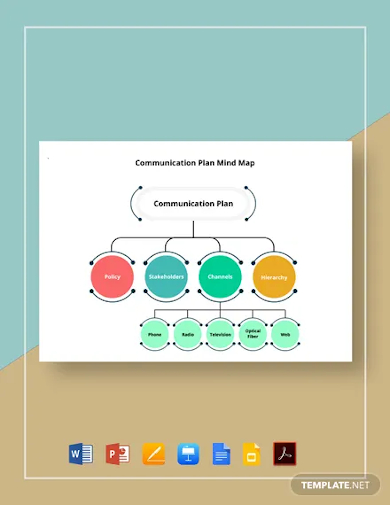
2. Communication Plan Mind Map
3. Communication Training Plan Mind Map
4. Climate Communication Plan Mind Map
5. Communication Time Management Plan Mind Map
6. Communication Plan Audience Mind Map
What is a Mind Map?
A mind map is a creative diagram that makes use of the concept mapping technique that consists of drawing a map of words to visualize connect and organize ideas and information. It is usually used to take notes, memorize certain information, and use it to prepare for lectures or writing assignments.
How to Make a Communication Plan Mind Map
1. Create a Central Idea
The central idea is your starting point. It is the one that represents the main topic you’re going to discuss. Place the central idea at the center of the mind map and include an image, shape, or color that suits the theme of your idea. Keep in mind when you’re choosing that particular object, it should be closely associated with your idea to draw attention.
2. Add Branches
To expand your central idea, add the main branches and it should flow from the central idea. The main branches are the key themes associated with the central idea. Then from the main branches, you can also add main branches that expound more on these themes and make them more specific the more you add more branches to the existing branches. Remember, you can add as many branches as you like as you add more associations from the different concepts in your branches.
3. Add Keywords
To make your mind map neater and more organized, just write down the keywords in your branches to keep your ideas short and sweet. Don’t make your mind map too cluttered with long and complex phrases.
4. Color Code the Branches
To complete your mind map and make it look creative and organized, add some finishing touches such as color-coding your mind map to help anyone who navigates it logically understand the points you’ve detailed out in your mind map and categorize, highlight, and identify all the connections with each information.
FAQs
How to make a communication plan?
To make a communication plan, you must do the following steps below:
- Identify the purpose of your message that you want to communicate
- Know your target audience
- Come up with the perfect message that speaks with your audience
- Consider your resources
- Plan for any obstacles that may hinder the success of communicating your message
- Strategize how you will connect your message with the media and anyone who can help you spread your message
- Create an action plan to disseminate your message
What are the five elements to make a communication plan successful?
The five elements that need to be present in your communication plan to make it successful are:
- Target audience
- Context of the communication
- Intended outcomes
- Key messages
- Appropriate medium of communication
- Appropriate messenger
What are the four basic components of communication?
The four basic components of communication are encoding, medium of transmission, decoding, and feedback.
Before you finalize your communication plan mind map, make sure it is flexible for any adjustments that you will make in case if the previous one you created is not efficient or it fails to reach your goals and objectives. You also need to strategize on how you will evaluate the plan based on the progress of your implementation and execution. To help you get started making the mind map, download our free sample templates above to use as your guide!
Related Posts
FREE 7+ Fashion Business Plan Samples in PDF
FREE 10+ Sprint Planning Samples In MS Word | Google Docs | PDF
FREE 10+ Wedding Planning Samples in MS Word | Apple Pages | Powerpoint | PDF
FREE 9+ Monthly Study Planner Samples in PSD | Illustrator | InDesign | PDF
FREE 9+ Sample Curriculum Planning Templates in PDF | MS Word
FREE 10+ Teacher Development Plan Samples in MS Word | Google Docs | Apple Pages | PDF
FREE 10+ Basketball Practice Plan Samples in PDF
FREE 12+ School Business Plan Samples in PDF | MS Word | Apple Pages | Google Docs
FREE 7+ Client Strategic Plan Samples in PDF | MS Word
FREE 11+ Trucking Business Plan Templates in PDF | MS Word | Google Docs | Pages
FREE 7+ Small Hotel Business Plan Samples PDF | MS Word | Apple Pages | Google Docs
FREE 14+ Bakery Business Plans in MS Word | PDF | Google Docs | Pages
FREE 4+ Yearly Lesson Plan Samples in PDF
FREE 50+ Strategic Planning Samples in Google Docs | Pages | PDF | MS Word
FREE 10+ Construction Project Plan Samples in MS Word | Google Docs | Apple Pages | PDF
